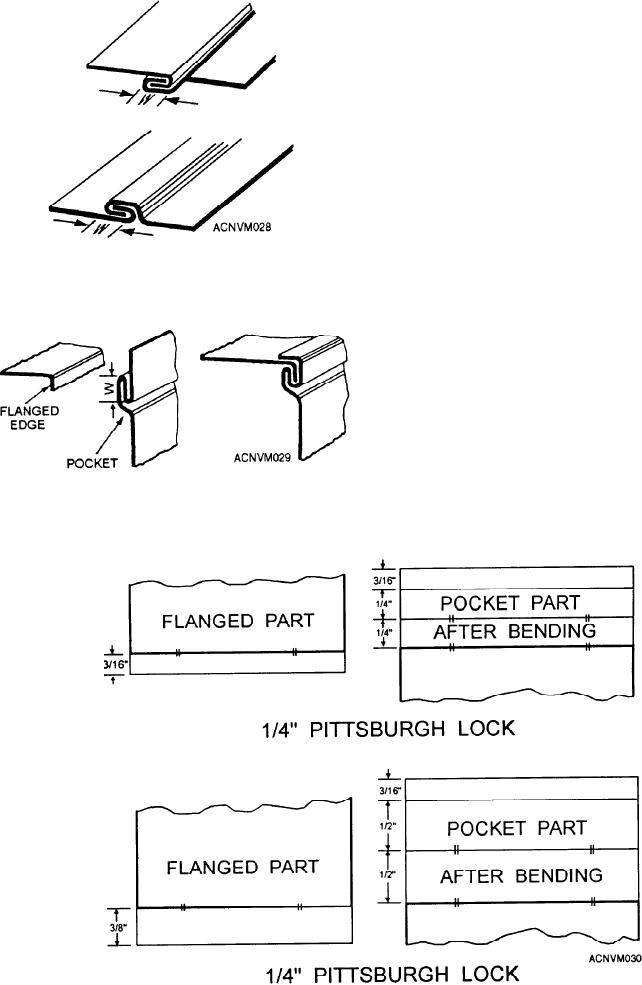
seam is three times the width (W in fig. 12-28) of the
lock, one-half of this amount being added to each edge.
For example, if you are to have a 1/4-inch grooved
seam, 3 l/4 = 3/4 inch, which is the total allowance;
l/2 of 3/4 inch = 3/8 inch, which is the allowance you
will add to each edge.
The PITTSBURGH LOCK SEAM (fig. 12-29) is a
very useful corner seam that is used to advantage in
rectangular ventilation lines, elbows, and boxes. At first
glance, the seam appears to be quite complicated, but
like lap and grooved seams it consists of only two
pieces. The two parts are the flanged edge and the
pocket with the projected edge, which is known as the
Figure 12-28.--Grooved seams.
locking flange after it has been bent over. After the
pocket is formed, the flanged edge is inserted into the
pocket, and the projected edge is then bent over the
flanged edge. It then forms the locking flange that
completes the Pittsburgh lock seam.
The allowance for the pocket and projected edge or
locking flange is W + W + 3/16 inch. W is the width or
depth of the pocket with 3/16 inch for the locking
flange. The width of the flanged edge is l/l6 inch less
than W to ensure a good tight fit. For example, if you
are laying out a l/4-inch Pittsburgh lock (fig. 12-30, top
Figure 12-29.--Pittsburgh lock seams.
view), your total allowance should be l/4 inch + l/4
inch + 3/16 inch, or 11/16 inch for the edge on which
Figure 12-30.--Layout of Pittsburgh lock seam.
12-10

